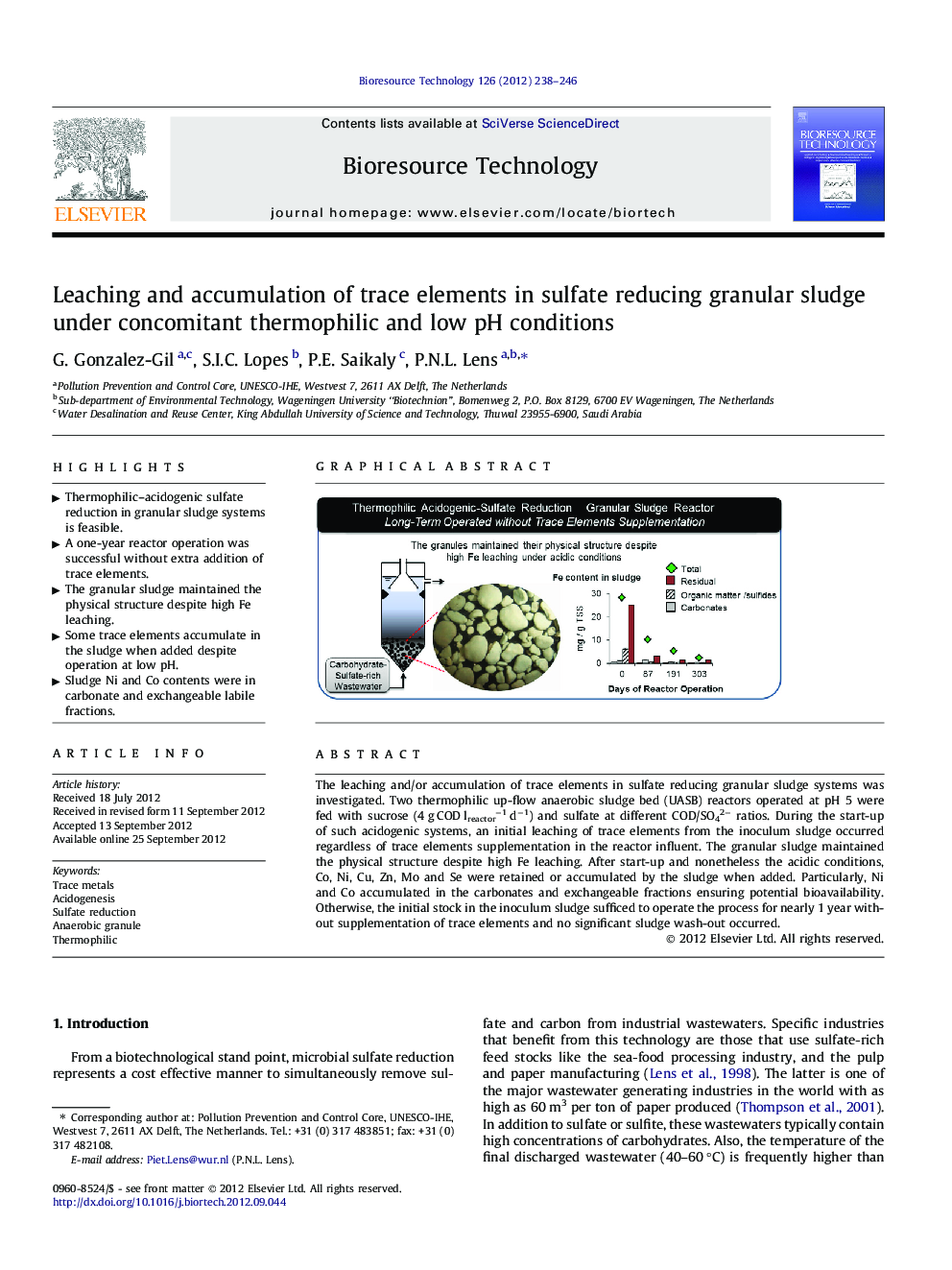| Article ID | Journal | Published Year | Pages | File Type |
|---|---|---|---|---|
| 681253 | Bioresource Technology | 2012 | 9 Pages |
The leaching and/or accumulation of trace elements in sulfate reducing granular sludge systems was investigated. Two thermophilic up-flow anaerobic sludge bed (UASB) reactors operated at pH 5 were fed with sucrose (4 g COD lreactor−1 d−1) and sulfate at different COD/SO42− ratios. During the start-up of such acidogenic systems, an initial leaching of trace elements from the inoculum sludge occurred regardless of trace elements supplementation in the reactor influent. The granular sludge maintained the physical structure despite high Fe leaching. After start-up and nonetheless the acidic conditions, Co, Ni, Cu, Zn, Mo and Se were retained or accumulated by the sludge when added. Particularly, Ni and Co accumulated in the carbonates and exchangeable fractions ensuring potential bioavailability. Otherwise, the initial stock in the inoculum sludge sufficed to operate the process for nearly 1 year without supplementation of trace elements and no significant sludge wash-out occurred.
Graphical abstractFigure optionsDownload full-size imageDownload as PowerPoint slideHighlights► Thermophilic–acidogenic sulfate reduction in granular sludge systems is feasible. ► A one-year reactor operation was successful without extra addition of trace elements. ► The granular sludge maintained the physical structure despite high Fe leaching. ► Some trace elements accumulate in the sludge when added despite operation at low pH. ► Sludge Ni and Co contents were in carbonate and exchangeable labile fractions.
